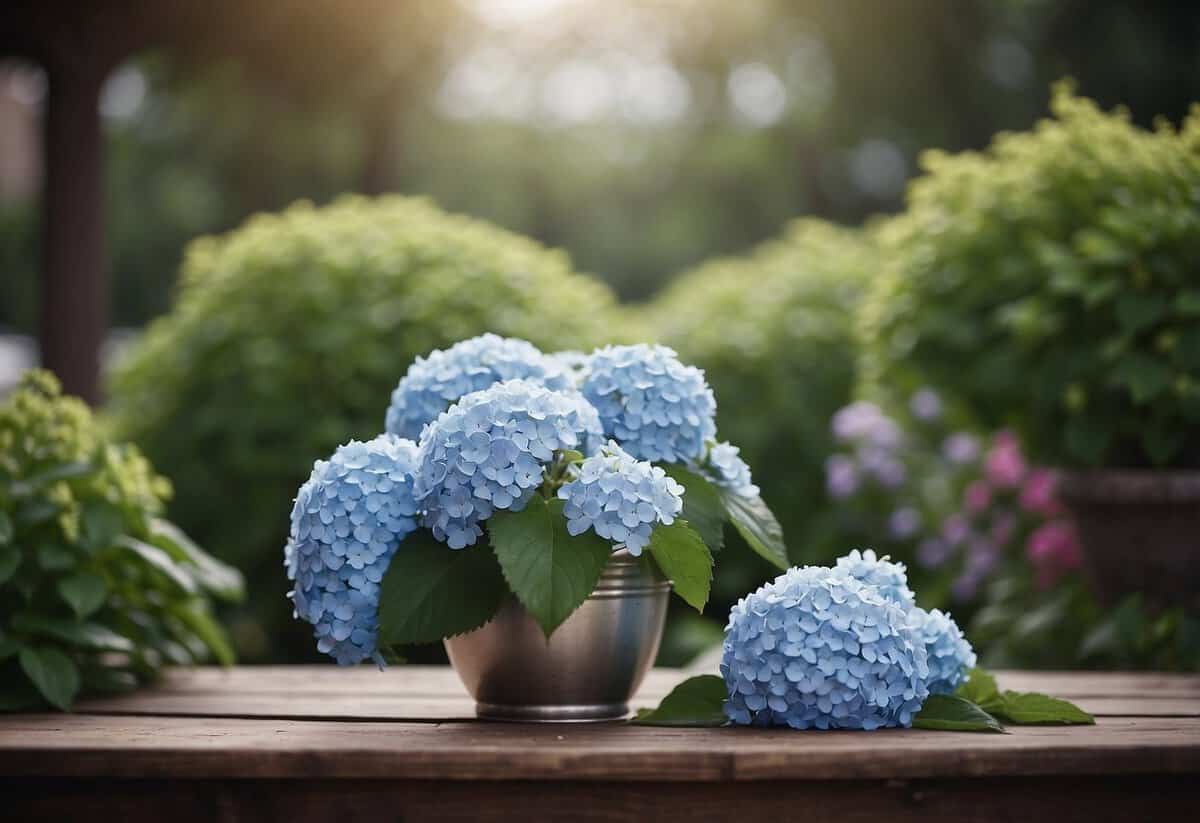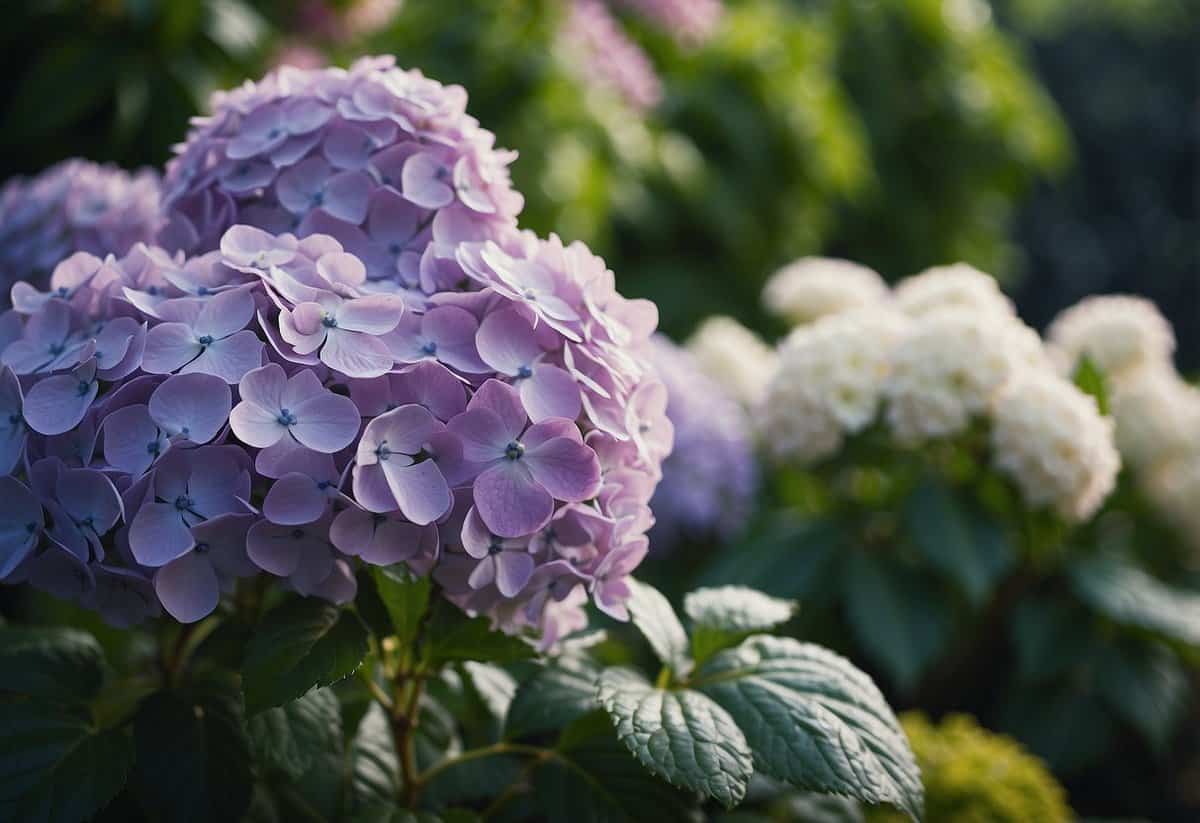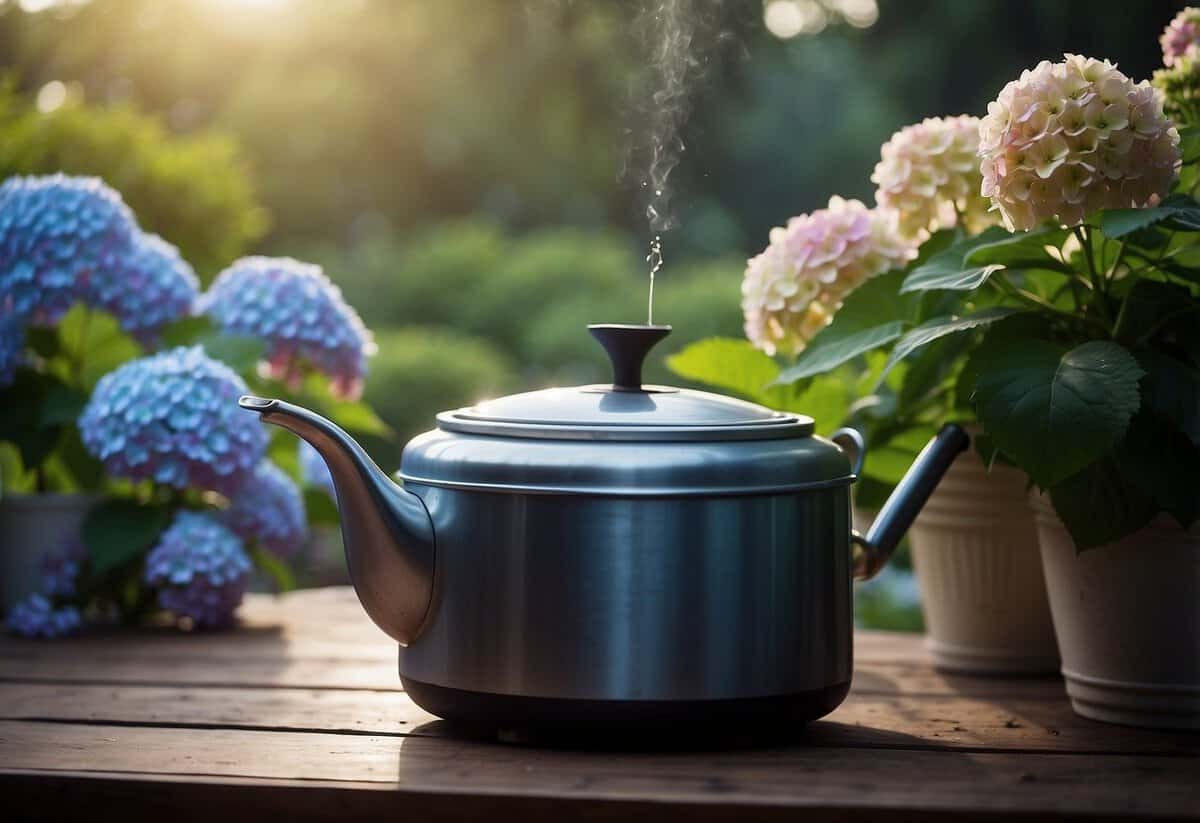Why Does Boiling Water Help Hydrangeas? Uncover the Benefits
Hydrangeas are renowned for their stunning, vibrant blooms, making them a favorite in many gardens and floral arrangements. Yet, if you’ve ever brought cut hydrangeas indoors, you might have noticed that they tend to wilt quickly. Dipping hydrangeas in boiling water can help them stay fresh longer by unclogging the stems and allowing water to reach the flowers.

When you cut a hydrangea bloom, the plant produces a sticky resin that can block water uptake. This barrier prevents the flowers from staying hydrated, even when placed in a vase of clean water. By dipping the end of the stems in boiling water for about 30 seconds, you can clear the clogged capillaries and revive wilting hydrangeas.
Next time you see your beautiful cut hydrangeas starting to droop, try using the boiling water technique. It’s a simple and effective way to keep your arrangements looking fresh and vibrant. For further details, you might want to explore the process outlined by the Chicago Botanic Garden.
The Science Behind Reviving Wilted Hydrangeas

Reviving wilted hydrangeas involves understanding their unique water needs and how boiling water can help. Explore how water uptake and transpiration are key to bringing these beautiful blooms back to life.
Understanding Hydrangea Hydration
Hydrangeas rely heavily on water to keep their blooms vibrant. These plants need consistent moisture to avoid wilting. If the soil dries out, the leaves and blooms start to droop.
Water is absorbed through the roots and travels up the stem to the blooms. Without enough water, the flowers can wilt quickly. Consistent watering helps prevent this, but sometimes extra measures are needed to revive them.
Stems also play a vital role in water movement. Cutting the stems at an angle allows more water to be absorbed, which can help restore wilted hydrangeas.
The Role of Boiling Water in Revival
Boiling water can shock the transport system of the hydrangeas. When you pour boiling water into a cup and place the stems in it for a short time, it helps open up the pathways for water absorption.
Submerging the stems in boiling water for about 30 seconds can make a dramatic difference. This technique rehydrates the flowers more effectively than cold water.
After this initial shock treatment, transfer the stems to a fresh vase with room temperature water. You’ll notice the blooms start to perk up as they rehydrate and regain their former beauty.
Water Uptake and Transpiration
Water uptake is the process where hydrangeas absorb water through their roots and stems. This water then travels up to the blooms, helping them stay firm and healthy.
Transpiration in hydrangeas involves the release of water vapor through the leaves. This process is crucial for cooling the plant and maintaining nutrient flow. When there’s not enough water, transpiration slows down, leading to wilting.
To boost water uptake, make sure to cut stems at a diagonal angle. This expands the surface area for water absorption and improves hydration. By understanding and managing these processes, you can keep your hydrangeas looking their best.
Practical Steps to Revive Hydrangeas

Reviving hydrangeas involves preparing a boiling water treatment, using proper cutting and soaking techniques, and ensuring their care after the boiling water treatment. These steps can help restore droopy blooms back to their vibrant state.
Preparing the Boiling Water Treatment
To begin, boil water in a kettle or pot. This step is crucial since hot water helps open up the stems, allowing better water absorption. Ensure the container you use to hold the boiling water is shatter-proof to avoid any accidents.
It is advisable to use a separate container for boiling water. Have this ready before you start any other preparations for your hydrangeas.
Cutting and Soaking Techniques
Use a sharp knife or scissors suited for gardening to cut the stems at a 45-degree angle. This increases the surface area for water absorption. Remove any leaves from the stem as they can use up precious water that should go to the flowers.
After cutting, place the freshly cut ends into the boiling water for about 30 to 60 seconds. This brief soak is enough to awaken the water uptake without damaging the stems.
Next, transfer the stems to a container filled with fresh water. Let the flowers soak in this water for a few hours to fully rehydrate. This step is key to soaking up as much water as possible.
Post-Boiling Water Care
After soaking, place your hydrangeas in a clean vase with room-temperature water. Ensure the vase is clean to prevent any bacteria from affecting the cut flowers. You might add a floral preservative to extend the lifespan of your revived hydrangeas.
Keep an eye on the water level and replace it every couple of days. Mist the blooms with water daily using a spray bottle to keep them hydrated.
By following these steps, you can effectively revive your hydrangeas and enjoy their beauty once more.
Troubleshooting Common Issues

Hydrangeas can be tricky to keep fresh, especially when wilted or droopy. Knowing the right techniques can make a big difference for your blooming beauties. Here are some specific tips to help you manage common problems with hydrangeas.
Dealing with Stubbornly Droopy Blossoms
Droopy hydrangeas can be revived using the boiling water method. Fill a cup with boiling water and submerge the bottom inch of the cut hydrangeas stems for about 30 seconds. This helps clear any blockages in the stems.
After that, place the flowers in a vase with fresh, room-temperature water. This treatment can often bring wilting hydrangeas back to life within a few hours, provided the blooms are not too old.
Preventing Future Wilt
To avoid future wilt, ensure your hydrangeas have enough water and are protected from harsh conditions. Hydrangeas are sensitive to heat and can wilt if exposed to temperatures above 85°F (29°C).
Consider planting them in a spot with partial shade or using a shade cloth. Frequent watering, especially during hot weather, can help keep the plants hydrated. Also, make sure the soil drains well to prevent waterlogging.
Emergency Care for Rapidly Wilting Arrangements
If your hydrangea arrangements are wilting rapidly, immediate action is crucial. Start by trimming the stems at a 45-degree angle under water to improve water uptake. Using the boiling water method can also help in emergency care.
After treating the stems with boiling water, submerge the entire flower heads in a bucket of cold water for about an hour. This can help rehydrate the blooms quickly and bring them back to their full splendor. Use clean vases and water to store the treated flowers to prevent further issues.
By following these steps, you can keep your hydrangeas looking fresh and beautiful for longer periods.
Tips and Tricks from Gardeners and Florists

To keep your hydrangeas fresh for a longer time, it’s important to follow some tried-and-true tips from gardeners and florists. These include using alum powder, recutting stems properly, and creating an ideal environment for your hydrangeas.
Using Alum Powder for Extended Freshness
Gardeners often use alum powder to help keep hydrangeas fresh. After cutting the stems from the plant, you should dip the bottom half-inch into alum powder before placing them in water. This helps prevent wilting and keeps the flowers looking vibrant. Alum powder helps keep the water flowing through the stem, which is essential for the blooms to stay hydrated.
The Right Way to Recut Stems
Recutting the stems is a crucial step in keeping hydrangeas fresh. Always cut the stems at a 45-degree angle. This increases the surface area for water absorption. It’s also helpful to make a small vertical slit in the base of the stem. Some gardeners recommend placing the recut stems in boiling water for about 30 seconds before transferring them to a vase with room temperature water. This practice helps clear any sap that might block water uptake.
Creating the Perfect Environment for Hydrangeas
Hydrangeas thrive in a controlled environment. Keep them away from direct sunlight and heat sources. Make sure to change the water in the vase every couple of days to keep it fresh. Adding floral preservatives to the water can also extend the life of your blooms. These preservatives usually contain ingredients that nourish the flowers and prevent bacterial growth. Placing the vase in a cool room can significantly enhance the longevity of your fresh-cut hydrangeas.
Enhancing Presentation for Social Sharing

To make your revived hydrangeas shine on social media, it’s crucial to focus on presentation. Select the perfect container, arrange blooms for visual impact, and capture Instagram-worthy moments.
Selecting the Right Container and Water Vessel
Choosing the right container can make a big difference. Opt for something that complements the colors and shapes of your hydrangeas. Clear glass vases are popular because they let you see the stems and any decorative water beads you might add.
Ensure the container is clean to avoid any bacteria that could shorten the life of your flowers. For a rustic look, mason jars can work well. If you’re aiming for an elegant aesthetic, consider a polished ceramic or metal vase.
The shape of the container should support the arrangement. Wide-mouthed containers give more space to spread out the blooms, making the display fuller.
Arranging Blooms for Visual Appeal
Arrange your hydrangea blooms to maximize their beauty. Trim the stems at different lengths to create layers. This gives depth and ensures that each flower is visible. Use floral tape to help position the stems, if needed.
Group blooms in odd numbers for a more natural look. Place the largest flowers in the center and fill in with smaller ones around. Turn the vase at different angles to check for gaps and adjust as needed.
Add a mix of greenery or other small blooms to complement the hydrangeas. This not only fills out the arrangement but also adds texture and contrast.
Instagrammable Moments with Revived Flowers
Capturing the perfect shot of your hydrangeas involves a bit of planning. Place the arrangement in natural light to highlight the colors. Soft, indirect light often works best and reduces harsh shadows. A white or neutral background can make the flowers pop.
Use props that match the theme of your bouquet. Candles, books, or minimalist items can enhance the scene without overwhelming it.
Experiment with different angles and close-ups to showcase the details of the blooms. Editing tools can enhance brightness and contrast, but avoid over-filtering to keep the natural look of your flowers.







